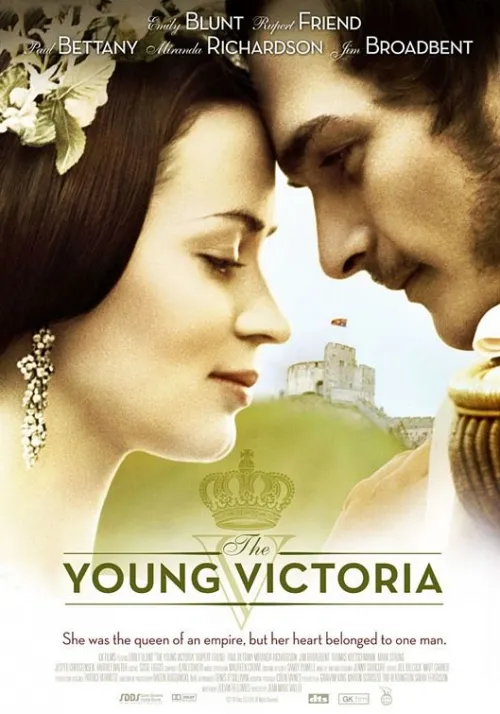Historical accuracy of The Young Victoria

Historical accuracy of The Young Victoria

Characters
Queen Victoria
Based on the real Queen Victoria during her ascension and early reign. The film accurately portrays her personality, key relationships (with Albert, Melbourne, her mother), and early political challenges, although an assassination attempt scene is heavily dramatized.
Prince Albert
Based on Victoria's real husband, Prince Albert of Saxe-Coburg and Gotha. The film accurately depicts his character, his arranged courtship with Victoria, their developing love, and his influence, aside from the dramatized assassination scene.
Lord Melbourne
William Lamb, 2nd Viscount Melbourne, was Victoria's first Prime Minister. The film accurately portrays their close political and personal relationship during her early reign.
King William IV
William IV was Victoria's real uncle and predecessor on the throne. His portrayal, including his dislike for Victoria's mother and Sir John Conroy, aligns with historical accounts of his later years.
Duchess of Kent (Princess Victoria)
Based on Princess Victoria of Saxe-Coburg-Saalfeld, Queen Victoria's real mother. Her difficult relationship with Victoria and reliance on Sir John Conroy under the "Kensington System" are accurately depicted.
Sir John Conroy
Conroy was the real comptroller to the Duchess of Kent. His attempts to control the young Victoria through the "Kensington System" and his resulting animosity with her are accurately portrayed.
More characters
King Leopold I of Belgium
Leopold I was the real King of the Belgians and uncle to both Victoria and Albert. His instrumental role in arranging their meeting and marriage is historically accurate.
Baroness Lehzen
Louise Lehzen was Victoria's real governess and later a close confidante. Her influential position and eventual friction with Prince Albert are accurately represented.
Duchess of Sutherland
Harriet Sutherland-Leveson-Gower, Duchess of Sutherland, was a real friend of Victoria and her Mistress of the Robes, central to the historical Bedchamber Crisis depicted in the film.
Duke of Wellington
Arthur Wellesley, 1st Duke of Wellington, was a major political figure. His role as an elder statesman advising the Queen is accurately portrayed.
Sir Robert Peel
Sir Robert Peel was the real Conservative leader. His interaction with Victoria during the Bedchamber Crisis, where she refused to dismiss her Whig ladies-in-waiting, is historically accurate.
Lady Flora Hastings
Lady Flora Hastings was a real lady-in-waiting to the Duchess of Kent. The unfounded pregnancy scandal surrounding her, her illness, death, and the damage to Victoria's reputation are accurately depicted.
Prince Ernest
Based on Ernest II, Duke of Saxe-Coburg and Gotha, Albert's real older brother, who often accompanied him.
Story
Victoria's early life and upbringing
The film accurately portrays Victoria's sheltered upbringing and the strict 'Kensington System' imposed by her mother, the Duchess of Kent, and Sir John Conroy.
Victoria's accession to the throne
Victoria's ascension to the throne at the age of 18 is a historical fact. The film depicts the events surrounding her becoming queen in 1837.
Victoria's relationship with Lord Melbourne
The film portrays Victoria's close relationship with Lord Melbourne, the Prime Minister, who served as her political mentor and confidante. This relationship is well-documented.
Victoria's marriage to Prince Albert
Victoria's marriage to Prince Albert in 1840 is a central event in the film. The film depicts their courtship and early years of marriage.
The assassination attempts on Victoria
The film includes the assassination attempts on Victoria, which were real events. These attempts highlight the dangers she faced and her courage.
The bedchamber crisis
The 'bedchamber crisis' of 1839, where Victoria refused to dismiss her Whig ladies-in-waiting, is accurately depicted in the film. This event demonstrated her early assertion of royal authority.
Victoria's evolving relationship with Albert
The film shows the evolution of Victoria and Albert's relationship, from initial attraction to a deep and loving partnership. This portrayal is consistent with historical accounts and their personal correspondence.
Albert's influence on Victoria
The film highlights Albert's growing influence on Victoria, both personally and politically. He became a trusted advisor and helped shape her reign.
Victoria's role as a mother
The film touches on Victoria's role as a mother, but it does not fully explore the complexities of her relationship with her nine children. While she loved her children, she also struggled with the demands of motherhood and royal duties.
Setting
The portrayal of the royal court
The film provides a glimpse into the royal court and its social dynamics, including the roles of various courtiers and advisors. The costumes and sets are meticulously designed to recreate the atmosphere of the era.
Overall
The film's historical accuracy
The film is generally considered to be historically accurate, with careful attention to detail in costumes, sets, and historical events..
